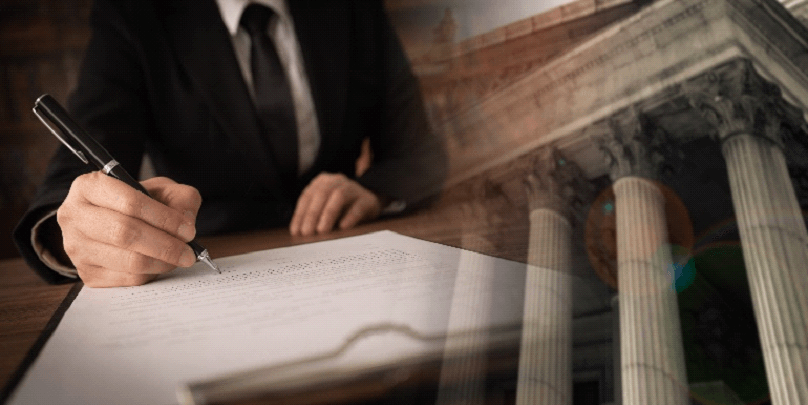
What You Need to Know About Secure Act 2.0
The Secure 2.0 bill is being considered by the House committee. This new bill is officially named the Securing a Strong Retirement Act and was originally introduced last October by Ways and Means Committee Chairman, Richard Neal (D-MA) and ranking member Kevin Brady (R-TX). The new bill aims to alleviate the struggles many have saving for retirement, which has been further exacerbated by the financial beating many suffered as a result of COVID-19. It seeks to make it easier for workers to save for retirement, while also making provisions for those who are nearing retirement age.
Changes to Retirement Savings
- Secure 2.0 will expand automatic enrollment by requiring employers that offer 401(k), 403(b) and SIMPLE IRA plans to automatically enroll all newly eligible employees at a 3% deduction level that increases by 1% annually until the 10% threshold is reached. Employees can, of course, opt out.
- Catch-up contribution limits would be raised. It would allow annual adjustments as inflation rates change. It would also allow anyone over the age of 60 to contribute an additional $10,000 into their 401(k)s and 403(b)s, and $5,000 into SIMPLE IRAs.
- The new bill will offer extra support to student loan borrowers by diverting 401(k) contributions to pay down student loan debt while still receiving a match from your employer. For people who have held off on contributing to their 401(k) due to high student loan obligations, this option would allow them to continue doing so while beginning to save for retirement.
- Secure 2.0 will raise the rate of the Saver’s Credit to 50% of what you contribute, regardless of income level. This would increase the number of people who would qualify as well as increase the value of the credit by $500.
- The bill would allow your part-time employees who have been with your company long-term to participate in your retirement plan after two years (the current threshold being three years).
Changes to Retirement Plans
- Required minimum distributions (RMDs) would be delayed even more. Secure 2.0 would increase the age that workers must begin making withdrawals from their retirement accounts to age 75 (currently it is age 72.5). This would give retirees who don’t rely on their RMDs to cover living expenses, three more years to avoid tax liabilities. Some individuals would be exempt from having to take RMDs at all based on how much they have in retirement savings. Those with less than $100,000 in retirement savings (indexed for inflation) would not be required to take RMDs at all under this new bill.
- The original Secure Act made in – plan annuities even more simple and accessible. Now, Secure 2.0 is making it easier for plans to offer annuities through lessening technical RMD requirements for annuity options and proposing certain restrictions on qualified longevity annuity contracts. Currently, the maximum that can go into a QLAC is either $135,000 or 25% of the value of your retirement accounts, whichever is less. The bill removes the cap.
- The bill would increase the annual limit on qualified charitable distributions (QCDs). These are distributions from an IRA that go directly to a charitable organization, and they count toward RMDs. If the RMD isn’t needed, they can avoid paying taxes on it by giving it to charity. The annual limit would increase from $100,000 to $130,000 annually.
Impact on Businesses
- The proposal would provide a new credit to businesses with 100 or fewer employees to offset up to $1,000 in employer contributions for each employee, and it would gradually phase out over 5 years.
- Secure 2.0 would also increase the tax credit up to 100% and allow defined contribution plans to receive higher credits, based on meeting certain criteria.
- There would be less paperwork, as businesses would not be required to distribute certain documents and disclosures to participants who were not enrolled I the company’s plan. The Act would also direct the U.S. Treasury and Department of Labor and Pension Benefit Guaranty Corporation to standardize and these requirements.
- 403(b) plans would be allowed to invest in collective investment trusts (CITs).
The original SECURE Act was passed almost entirely unanimously in both the House and the Senate, so it is likely that the SECURE Act 2.0 will be approved. Keep in mind, the provisions are subject to change as the proposed bill moves through the legislative process.
Sources:
Forbes. (May 2021). Could Secure Act 2.0 Fix the Retirement Crisis? https://www.forbes.com/advisor/retirement/secure-act-2/
Kiplinger. (January 2021). Don’t Have a Pension? The Secure Act Could Help.
https://www.kiplinger.com/retirement/retirement-planning/602128/dont-have-a-pension-the-secure-act-could-help
CNBC. (May 2021). House Committee to Consider “Secure 2.0” Retirement Bill This Week. Here’s What’s in it. https://www.cnbc.com/2021/05/03/house-committee-to-consider-secure-2point0-retirement-bill-this-week.html
Napa. (May 2021). What’s in the New Secure Act 2.0?
https://www.napa-net.org/news-info/daily-news/what%E2%80%99s-new-secure-act-20
Main Street Advisors, LLC. May 2021. Main Street Advisors, Inc. is a Registered Investment Advisor. The articles and opinions expressed in this material were gathered from a variety of sources, but are reviewed by Main Street Advisors, LLC, prior to its dissemination. All sources are believed to be reliable but do not constitute specific investment advice. The views expressed are those of the firm as of March 2021 and are subject to change. These opinions are not intended to be a forecast of future events, a guarantee of results, or investment advice. Any advice given is general in nature and investors must consider their own individual situation. Always contact your financial/investment professional before making any financial decisions. Main Street Advisors, LLC is not responsible for any damages or losses arising from any use of this information. Past performance is no guarantee of future results.




